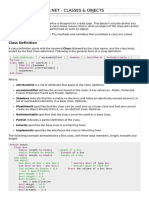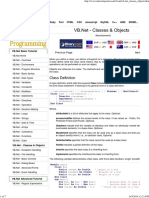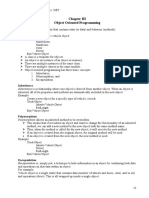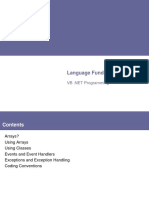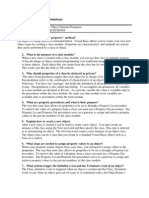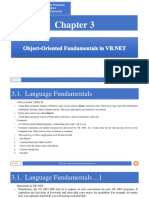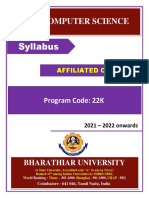0% found this document useful (0 votes)
19 views41 pagesClasses and Objects
The document provides an overview of Object-Oriented Programming (OOP) concepts in VB.NET, focusing on classes, objects, inheritance, polymorphism, and interfaces. It explains how to define classes, create objects, and implement features like constructors, destructors, and abstract classes. Additionally, it covers the significance of access modifiers and the relationship between classes and objects in programming.
Uploaded by
oimarigobertCopyright
© © All Rights Reserved
We take content rights seriously. If you suspect this is your content, claim it here.
Available Formats
Download as PPT, PDF, TXT or read online on Scribd
0% found this document useful (0 votes)
19 views41 pagesClasses and Objects
The document provides an overview of Object-Oriented Programming (OOP) concepts in VB.NET, focusing on classes, objects, inheritance, polymorphism, and interfaces. It explains how to define classes, create objects, and implement features like constructors, destructors, and abstract classes. Additionally, it covers the significance of access modifiers and the relationship between classes and objects in programming.
Uploaded by
oimarigobertCopyright
© © All Rights Reserved
We take content rights seriously. If you suspect this is your content, claim it here.
Available Formats
Download as PPT, PDF, TXT or read online on Scribd
/ 41
